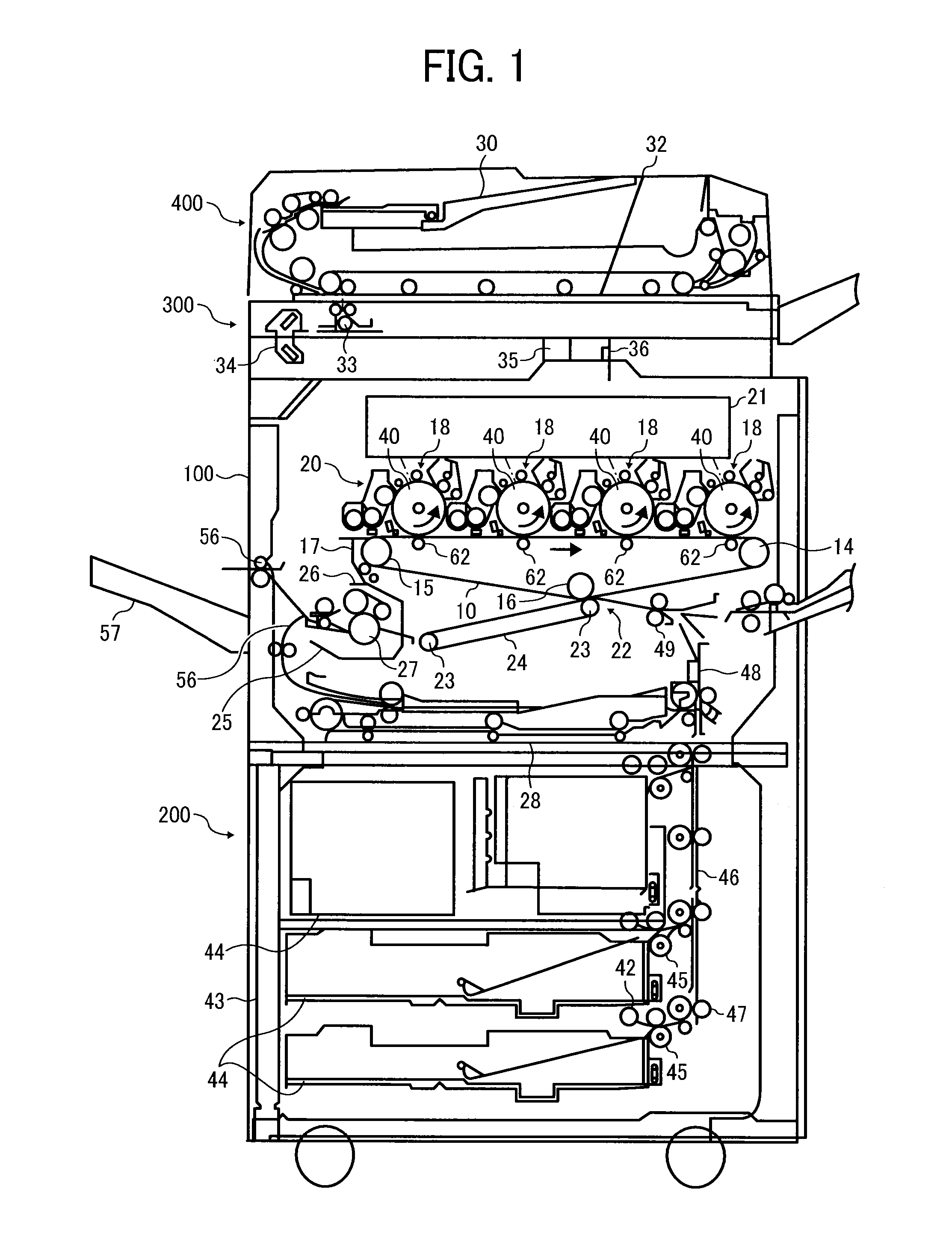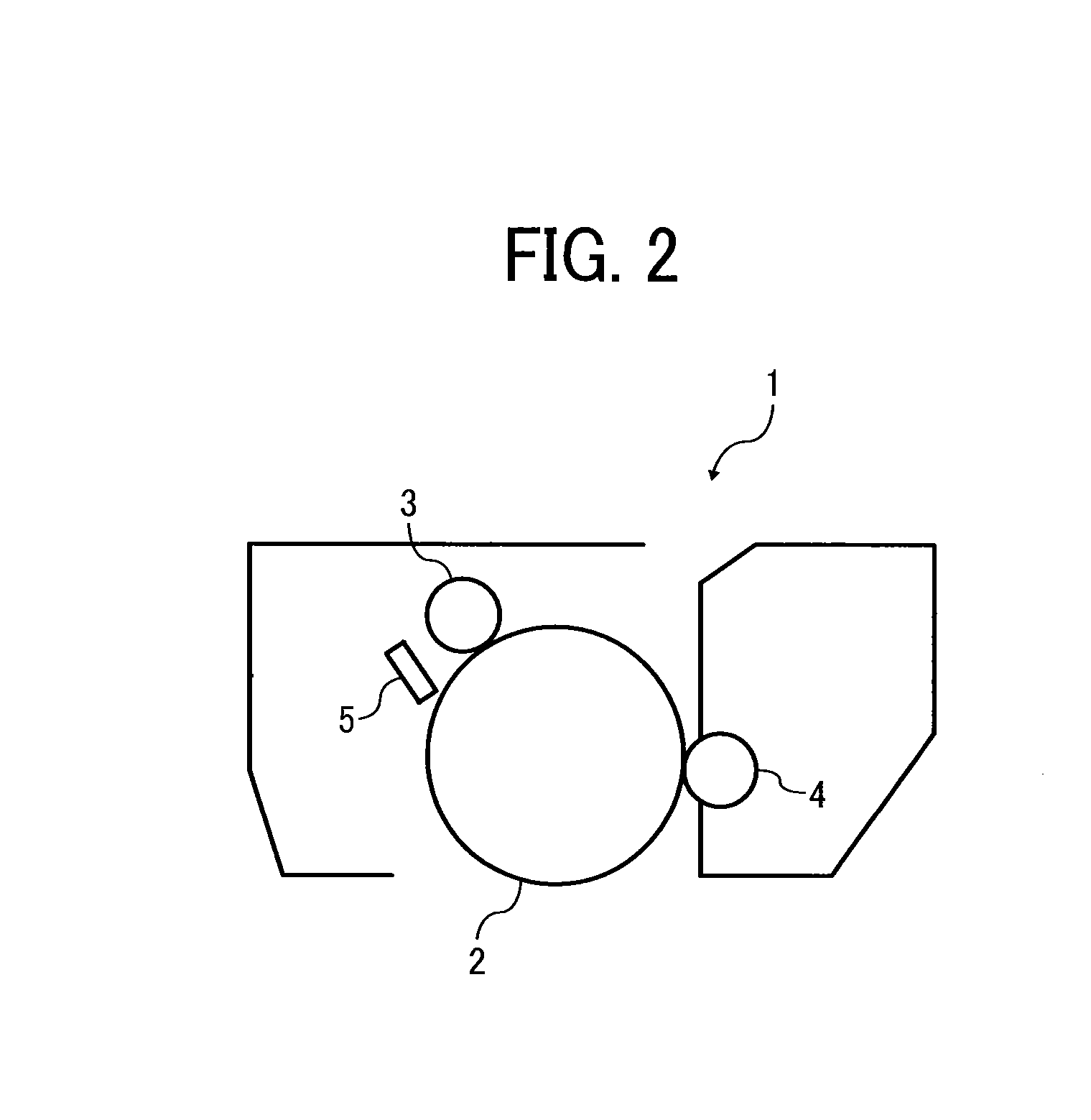Toner, development agent, image forming apparatus, and image forming method
a technology of development agent and development agent, which is applied in the direction of electrographic process, electrographic process using charge pattern, instruments, etc., can solve the problems of degradation of toner transferability in the development device, unsatisfactory in terms of energy saving, and degrading the productivity and fluidity of toner
- Summary
- Abstract
- Description
- Claims
- Application Information
AI Technical Summary
Benefits of technology
Problems solved by technology
Method used
Image
Examples
synthesis example 1
Synthesis of Block Copolymer A-1
[0186]212 g of L-lactide and 38 g of D-lactide (mass ratio of L-form to D-form=85 / 15) and 107 g of a crystalline polyester A2-1 of Synthesis Example 2 were placed in a separable flask followed by drying at 40° C. for 5 hours. Thereafter, the internal temperature was gradually raised to 150° C. After the system is confirmed to be uniform by naked eyes, 50 mg of tin 2-ethyl hexanoate was placed in the flask for polymerization reaction.
[0187]During this reaction, the internal temperature of the system was controlled not to surpass 190° C. After two-hour's reaction, the system was cooled down to 175° C. followed by de-lactide for 60 minutes under a condition of 10 mmHg to complete the polymerization reaction. A block copolymer A-1 was thus made. This resin has a weight average molecular weight (Mw) of 31,000 and a melting point of 51° C.
synthesis example 2
Crystalline Polyester A2-1
[0188]1,6-hexane diol and adipic acid were placed in a heated and dried flask equipped with a nitrogen introducing tube, a dehydration tube, a stirrer, and a thermoelectric couple with a ratio of OH / COOH of 1.15 to conduct reaction with 300 ppm of titan tetraisopropoxide at 200° C. to 230° C. for 10 hours at normal pressure followed by 5 hour reaction with a reduced pressure of 10 mmHg or less. A crystalline polyester A2-1 was thus obtained. The resin had a melting point of 55° C.
synthesis example 3
Synthesis of Crystalline Polyester B-1
[0189]1,6-hexane diol and a sebasic acid were placed in a heated and dried flask equipped with a nitrogen introducing tube, a dehydration tube, a stirrer, and a thermoelectric couple with a ratio of OH / COOH of 1.15 to conduct reaction with 300 ppm of titan tetraisopropoxide at 200° C. to 230° C. for 10 hours at normal pressure followed by 5 hour reaction with a reduced pressure of 10 mmHg or less. A crystalline polyester B-1 was thus obtained. This resin has a weight average molecular weight (Mw) of 22,000 and a melting point of 65° C.
[0190]Manufacturing procedures of toner of Examples and Comparative Examples are as follows:
[0191]Manufacturing Toner
[0192]Preparation of Master Batch 1
[0193]1,200 parts of water, 500 parts of carbon black (Printex 35, manufactured Degussa AG, DBP oil absorption amount: 42 ml / 100 mg, PH: 9.5), and 1,500 parts of the block copolymer A are admixed by a Henschel Mixer (manufactured by NIPPON COKE & ENGINEERING. CO., L...
PUM
| Property | Measurement | Unit |
|---|---|---|
| spin-spin relaxation time | aaaaa | aaaaa |
| spin-spin relaxation time | aaaaa | aaaaa |
| melting point | aaaaa | aaaaa |
Abstract
Description
Claims
Application Information
 Login to View More
Login to View More - R&D
- Intellectual Property
- Life Sciences
- Materials
- Tech Scout
- Unparalleled Data Quality
- Higher Quality Content
- 60% Fewer Hallucinations
Browse by: Latest US Patents, China's latest patents, Technical Efficacy Thesaurus, Application Domain, Technology Topic, Popular Technical Reports.
© 2025 PatSnap. All rights reserved.Legal|Privacy policy|Modern Slavery Act Transparency Statement|Sitemap|About US| Contact US: help@patsnap.com



